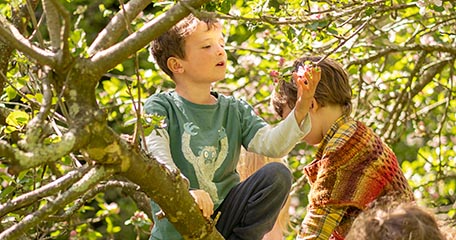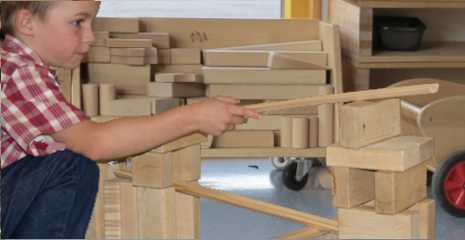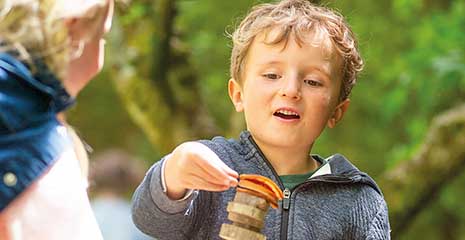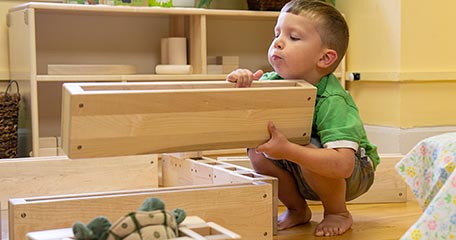Less plastic, better play
Bringing nature into your indoor space
| March 2025We all strive to create early learning environments that truly value nature, ensuring that our daily practices foster a lasting connection to the natural world. My name is Santa Svike, and as the Sustainability and Governance Lead for Acorn Early Years, I’m excited to share insights into the importance of using natural resources in nursery settings.
Every child should have the chance to enjoy and learn from the outdoors, to experience all types of weather, and the beauty of every season. Whether the children are exploring the nursery gardens, engaging in forest school sessions, or going on local community outings, outdoor experiences are fundamental for their wellbeing.
Equally important, however, are the indoor environments children spend time in – so why not bring a touch of nature inside?
Instead of using plastic toys, Acorn is passionate about filling indoor spaces with natural materials and open-ended resources that spark creativity and imaginative play.
Natural, quality toys have sustainable advantages
Let’s talk about natural toys. When we use good-quality wooden toys, responsibly sourced from well-managed forests, we see numerous sustainability advantages. Wooden toys are recyclable, so if they do need disposal, they won’t contribute to landfill waste. In fact, wooden toys are typically far more durable than plastic ones, leading to less waste overall. An additional strength of wooden resources is that they encourage us to care for what we own. When a toy or piece of furniture breaks, it can often be repaired rather than discarded – avoiding the consumerist impulse to replace rather than mend.
Involving children in these repair processes, when appropriate, can offer them powerful lessons in sustainability. If an item can’t be fixed, we encourage re-purposing it into something new – a chance for children to practice their problem-solving skills.
Resource longevity is important!
At Acorn, I asked our staff and families to define ‘sustainability,’ and their responses highlighted the breadth of the concept. Definitions ranged from minimising environmental impact by reducing our carbon footprint, to actively creating positive changes by, for example, supporting biodiversity. However, while all responses reflected interconnected aspects of sustainability, the most common theme was resource longevity.
Next, I asked Acorn’s families whether they thought their child’s nursery practised an eco-friendly approach, and if so, to name as many examples of this approach as possible. Interestingly, the example that families mentioned most frequently was the use of wooden rather than plastic toys. A survey of 152 families showed that among all their sustainable practices, parents and carers viewed the presence of wooden toys as the clearest indicator of the nursery being eco-friendly.
Wooden toys help reduce waste
Waste is a major contributor to global warming and climate change, with open landfill sites accounting for 20% of total methane emissions – a gas over 80 times more potent than carbon dioxide in trapping heat. Additionally, the overwhelming presence of plastic waste leads to environmental degradation, breaking down into microplastics that pollute oceans, harm wildlife, and even enter our food chain, posing risks to human health. Reducing waste wherever possible is not just beneficial – it’s essential for protecting our planet and future generations. By choosing wooden toys over plastic, we can significantly reduce waste, while providing children with durable, natural materials that are safer for both them and the environment.
Embracing sustainable resources in nurseries is more than just an environmental responsibility – it’s an opportunity! By choosing natural materials over plastic, we educators instil essential life skills such as reusing, repairing, and repurposing. Creating indoor environments that reflect the beauty and sustainability of the natural world helps children form a deeper connection to the planet they will one day inherit. With thoughtful choices, we can shape a more sustainable future – one wooden toy at a time!











